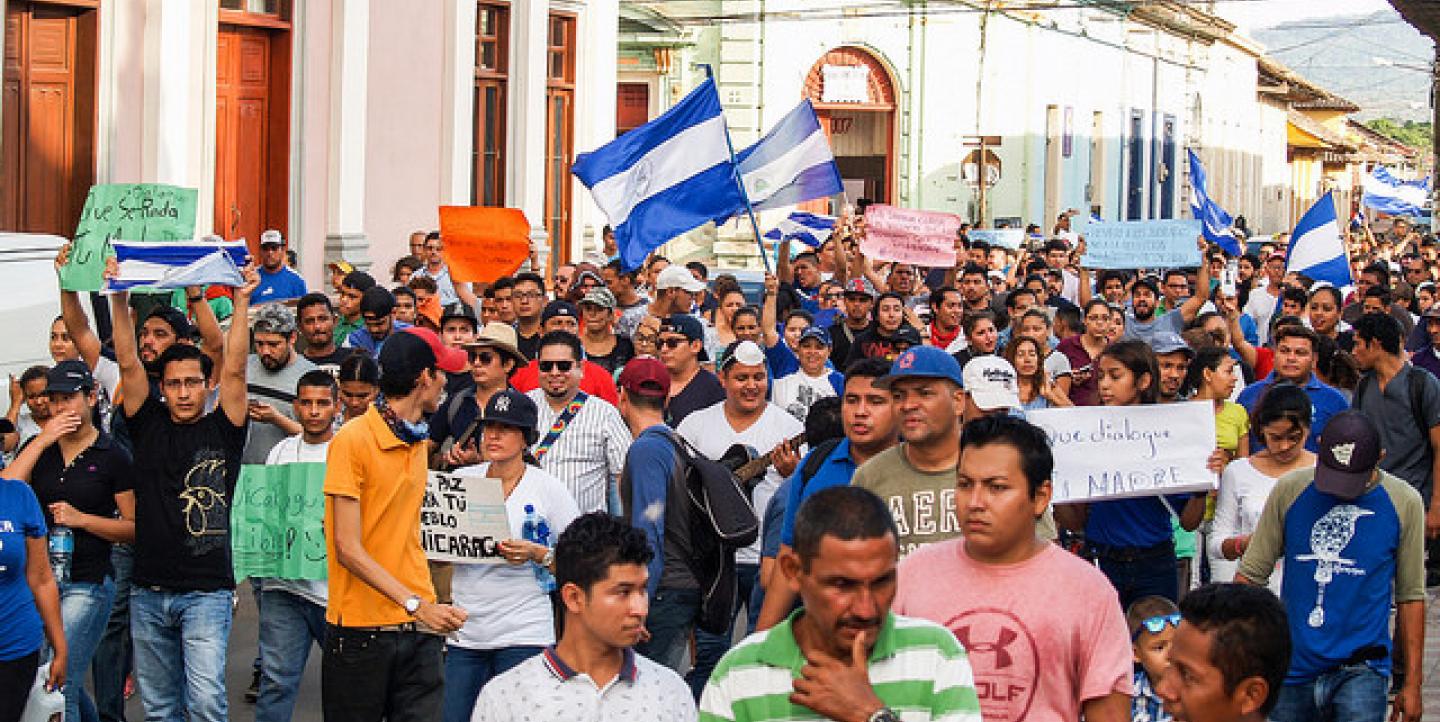What do you do when a government censors the media? You use social networks.
This was how thousands of young Nicaraguans started the #SOSNicaragua movement as the country’s government censored independent outlets and violently suppressed protests. All in just seven days.
As seen in the Arab Spring and the #19S mobilization in Mexico, Nicaraguans managed to organize and report through the only means that the state did not control: the internet. Social media was key for Nicaraguans to rise up and take to the streets demanding justice and for reporters to cover the protests.
Social media, the second trench
People used social networks in a variety of ways, relying mostly on Twitter.
“It is the most effective communication channel,” said web journalist Misael Centeno. “It allows people to exchange brief, synchronous messages during a protest.” Because Twitter is widely used by journalists and intellectuals in Nicaragua, it has gained greater credibility. "There are users with no place on television or the traditional press, but who have become micro-influencers and are capable of making any subject in the country go viral," he said.
Meanwhile, independent media outlets also reached their audiences through Facebook. In the midst of the chaos, journalists used the platform to expose aggressions against civilians. "The stories were told through Facebook Live, videos and photos,” Carlos R. Fonseca said.
WhatsApp was also crucial because it allowed people to share information organically. Because each message sent via WhatsApp is encrypted, its users enjoyed an added level of privacy.
"People are involved in different WhatsApp groups: parent’s groups, childhood friends, co-workers, and others. In those groups, a lot of relevant content was exchanged," Fonseca said.
New challenges
When social media users are the only source of information, reporting comes with greater challenges. One of them is fact-checking; the other is discovering fake news.
Rodrigo Serrano, co-founder of the #YoSoy132 and #Verificado19S movements, believes there is a real information war going on, and that disinformation has allegedly become become part of the communication strategy of governments — including the Mexican administration.
"Teaching is a way to fight disinformation,” said Serrano. “Teach your aunt not to share everything she receives on WhatsApp, but to first look for its source and learn to distinguish junk sites from real ones. Very basic things.”
When confronted by suspicious news, journalists should also do on-the-ground reporting and ask for statements. However, Serrano admitted that the process may take too much time. "While you’re checking, false news has already gone viral.”
In a crisis like Nicaragua's, it’s challenging for journalists to document what happens at the same pace as information is being spread on social media. Serrano suggests creating a system dedicated to gathering evidence and testimonies.
The next step for #SOSNicaragua
The #SOSNicaragua movement is horizontal — organized by everyday citizens on a grassroots level — like most movements born on social media. However, some citizens are demanding a political organization to face the ruling party.
"Based on my experience, I think there are two paths ahead. The first one, trying to have an impact at a political level within the system. The second, continuing the horizontal organization with the help of social media,” said Serrano. “The two are a bit incompatible."
If the movement wants to prevail in the long term, it’s necessary to strengthen the connections that were created during this crisis, he added. "The point is to build trust and further develop these networks. These networks function within a specific context today, but the goal is that they can continue to work together in the future."
A social dialogue committee is currently on its way. Different sectors of Nicaraguan society will participate, including students who helped form the Autoconvocados movement.
Through social media, young Nicaraguans have discovered an alternative to the traditional political system, and journalists discovered an alternative to the traditional reporting system. People are organized like never before — and no longer need old structures to do it.
Main image CC-licensed via Julio Vannini.
Ana Siu is the creative director and digital strategist at Publicis One in Nicaragua.

